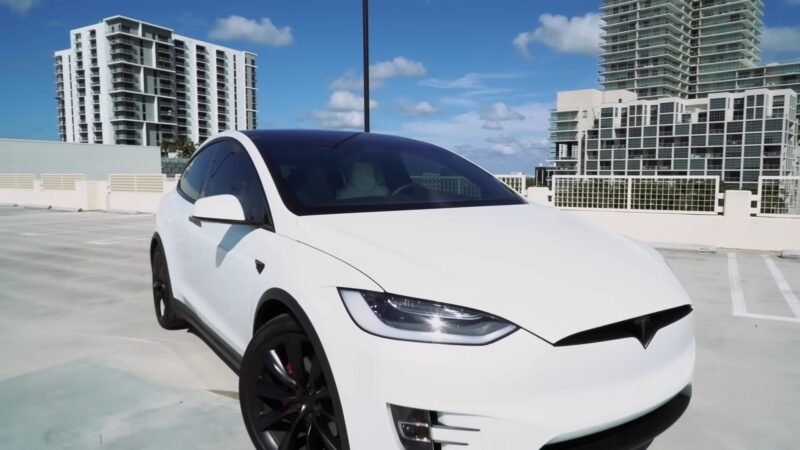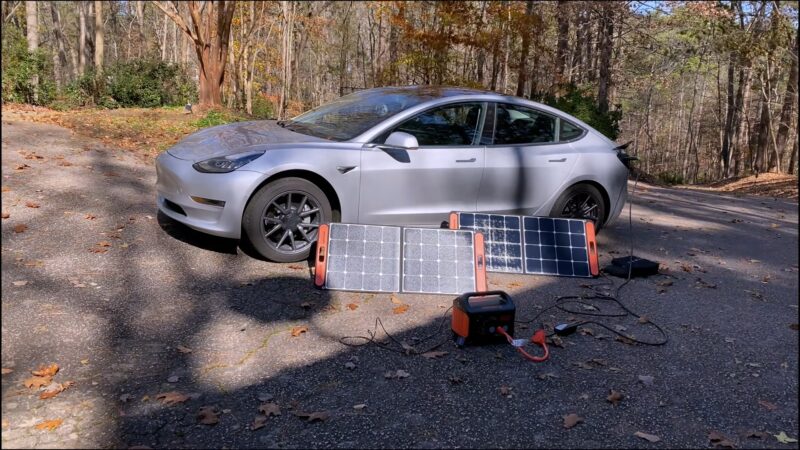Ever since Tesla’s inception, the electric car has been a popular choice. With good reason too; their vehicles are some of the most revolutionary and technologically advanced on the market. But what about charging them? For those of us who don’t live in an area with a Supercharger station, our options can be somewhat limited.
That’s where solar panels come in. Not only do they allow you to charge your car without relying on a power outlet, but they also create renewable energy that can be used elsewhere in your home or business. In this blog post, we will explore how many panels to charge a Tesla and other important considerations when installing panels.
What is a Tesla?
It is a plug-in electric car made by Tesla, Inc. The first one, the Tesla Roadster, was introduced in 2008. The Model S sedan was released in 2012 and has since been followed by the Model X SUV in 2015, the Model 3 sedan in 2017, and the second-generation Watch.
The Tesla Model S is the company’s flagship sedan and has been recognized as one of the best-selling luxury cars in history. The all-electric Tesla Model 3 was the first car to receive full ratings from the Environmental Protection Agency (EPA) and the National Highway Traffic Safety Administration (NHTSA) with a combined score of 5 stars out of 5.
What is a Solar Panel?
A solar panel is a device that collects energy from the sun to produce electricity. Solar panels are made up of several different pieces, including a panel substrate, an absorber, a semiconductor, and a conductor. The substrate usually has a variety of different materials laminated together, such as glass or plastic.
The absorber is where the solar energy is captured. This can be done in two ways: by using light-blocking material that absorbs all of the sunlight, or by using mirrors to reflect the sunlight onto the absorbing material. The semiconductor converts the sunlight into electrical current, and the conductor helps distribute this current throughout the panel.
There are many types of panels, and they come in different sizes and shapes to fit any need. Some panels are specifically designed for large roofs or windows, while others are small enough to be installed on your house or car. They have become increasingly affordable over time, so there’s no reason not to go green and install one!
Read our post on what are solar panels made of for more tips.
Types of Panels
There are three main types of panels: crystalline, thin-film, and conventional.
Crystalline panels are the most common type and have a very high-efficiency rate. Thin-film panels are more expensive than crystalline panels, but their efficiency is lower. Conventional ones are the least efficient type and tend to be used for roofing or large installations.
How many panels do I need to charge a car?
The number of panels you need to charge a Tesla will vary depending on the size of the Tesla, the sun’s strength, and your location. A standard panel can produce between 2-6 kWh per day. For a Tesla Model S, this would be equivalent to charging the battery at around 3 am during the day when the sun is strongest. For a Model X, this would be equivalent to charging in the morning or evening when sunlight is plentiful.
However, a good rule of thumb is that you’ll need about 2.5 times as many panels to charge a Tesla Model S than you would charge a standard household battery. That means if you have a Model S with a 60 kWh battery, you’ll need at least 180 solar panels to fully recharge it.
How to Charge it?
Step 1: Find your Tesla’s solar panel location
The first step is finding the solar panel location. This can be done by looking at the car’s exterior or interior. If the panel is located on the exterior, you will need to find a place to plug in your Tesla. You can do this by finding an outlet in your garage or finding a spot with direct sunlight.
If the solar panel is located inside the car, you will need to find a charging station. You can find charging stations by searching for “Tesla Solar Charging” on Google Maps or by using an app like SpotHero.
Step 2: Connect your Tesla to the solar panel
Once you have found your solar panel and plugged in your Tesla, it’s time to connect them together! To do this, simply open the sunroof and point the rear of your Tesla toward the sun. Be sure to orientate both panels in a south-easterly direction for best results. It should start charging right away!
Watch this video for additional information:
What are the pros and cons?
Pros:
- Convenience – panels are convenient because they can be placed anywhere there is sunlight and they don’t require an electric outlet.
- Cost-efficiency – they are a cost-effective way to provide power to a car.
- Environmentally friendly – they produce zero emissions, making them environmentally friendly.
- Durability – they are durable, meaning they can withstand weather conditions and wear and tear.
- Customizable – they can be customized to fit the needs of each individual user.
Cons:
- Installation – installation of panels can be difficult and require professional help.
- Limited range – they aren’t always effective in areas with low sunlight availability.
- Inability to generate power during cloudy or dark skies – solar panels are unable to generate power when there is insufficient sunlight.
Conclusion
There is no one-size-fits-all answer to this question, as it will vary depending on the size and type of car you have, as well as the weather conditions. However, our comprehensive guide should give you a good starting point in estimating how many solar panels are necessary to charge your Tesla.



